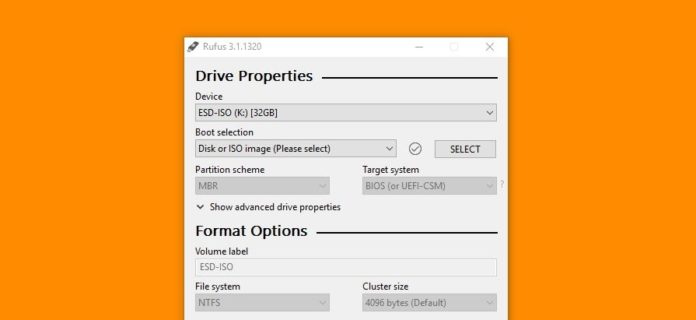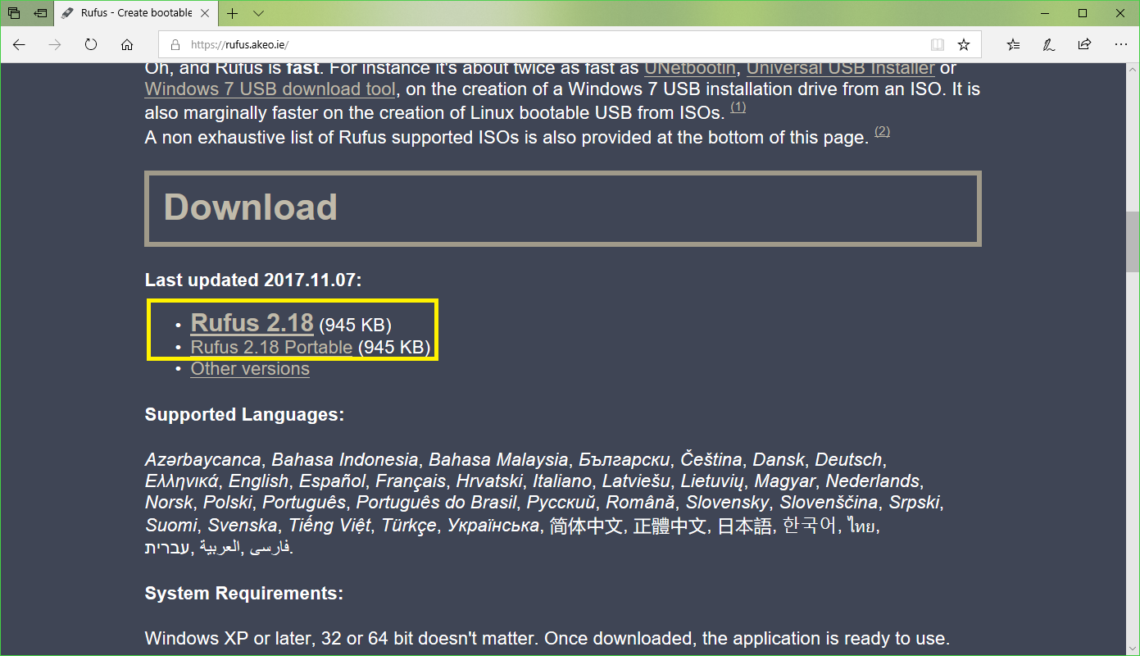
- #RUFUS BOOTABLE USB PORTABLE#
- #RUFUS BOOTABLE USB ISO#
- #RUFUS BOOTABLE USB DOWNLOAD#
- #RUFUS BOOTABLE USB TORRENT#
- #RUFUS BOOTABLE USB WINDOWS#
Note: If you select “DD Image” option, you can create another partition on the USB drive, allowing you to use the rest of the space. As a result, we recommend selecting DD Image.
#RUFUS BOOTABLE USB ISO#
Selecting ISO image, will allow you to edit the files from the Kali Linux ISO, but at the potential lose of hardware compatibility. You may get a prompt saying about ISOHybird image. If you are not sure, leave it as the default values.Ħ. “ G:\” and size).īoot section needs to point to point to the Kali Linux ISO file, which can be done by clicking the SELECT buttonĭepending on your configuration, you can set the Partition scheme, as well as Target system. With Device, check the dropdown list of options for the USB drive (e.g. “ G:\") it uses once it mounts, and launch Rufus.
#RUFUS BOOTABLE USB WINDOWS#
Plug your USB drive into an available USB port on your Windows PC, note which drive designator (e.g. This is to allow for the most hardware compatibility.Ĭreating a Bootable Kali USB Drive on Windows (Rufus) Once Etcher alerts you that the image has been flashed, you can safely remove the USB drive and proceed to boot into Kali with it.Īt the time of writing, Etcher will use MBR. Note: You may get a UAC prompt asking for administrator privileges that you will need to accept.ĥ. “ G:\") it uses once it mounts, and launch Etcher.Ĭlick Flash from file, and locate the Kali Linux ISO file to be imaged with.Ĭlick Select target and choose the USB drive you want to make bootable. The procedure is identical.)Ĭreating a Bootable Kali USB Drive on Windows (Etcher) If one does not work for you, consider the other.Ī USB drive, 8GB or larger (Systems with a direct SD card slot can use an SD card with similar capacity. We recommend Etcher (installer or portable) as it is simpler to use, however Rufus is another popular option with its advance options. If you’re running under Windows, there is not one tool that is considered the overall best for imaging. What You’ll NeedĪ verified copy of the appropriate ISO image of the latest Kali build image for the system you’ll be running it on. The specifics of this procedure will vary depending on whether you’re doing it on a Linux, macOS/OS X, or Windows system. In order to do this, we first need to create a bootable USB drive which has been set up from an ISO image of Kali Linux.
#RUFUS BOOTABLE USB PORTABLE#

Next, it will say it is recommended to use ISO file, click Yes and move forward.
#RUFUS BOOTABLE USB DOWNLOAD#
When you click on the START button it will ask you to download Idlinux.sys and Idlinux.bss, click on the Yes button to download them. For that simply click on the SELECT button. The second option is Boot Selection, where we have to select the ISO file of the OS for which we want to create bootable USB drive, here we are selecting our downloaded CentOS 8 x86_64 bit iso file. 4: Insert CentOS 8 Linux ISO DVD to Rufus If you have a single USB storage device connected on your system, the Rufus will automatically set that. At the front of which you will find a drop-down box, click on that and select the connected Pen or USB drive at least of 8GB. On the screen, the first option will be the Device. Well, just like any other Windows application run the setup of Rufus too. Just download the executable, run it that’s it.

This application is open source and quite fast & safe. Now download the Rufus USB creator portable application on your system.
#RUFUS BOOTABLE USB TORRENT#
You can easily get the ISO file of both CentOS 8 Linux and Stream from its official website, however, for your convenience, here are the links: Direct Download Linux 8 and Stream+ Torrent Download CentOS 8 and Stream. The tutorial is performed using the centOS 8 LTS Linux ISO image, however, the steps will be the same for CentOS stream version. 5: Finally start the flashing process Steps to make bootable USB of CentOS 8 Linux


 0 kommentar(er)
0 kommentar(er)
